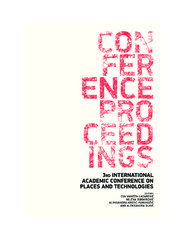Prikaz osnovnih podataka o dokumentu
Problem of protection of original appearance of prefabricated concrete facades and energy improvement measures - example of New Belgrade
| dc.creator | Macut, Nikola | |
| dc.creator | Radivojević, Ana | |
| dc.date.accessioned | 2020-03-05T13:06:26Z | |
| dc.date.available | 2020-03-05T13:06:26Z | |
| dc.date.issued | 2016 | |
| dc.identifier.isbn | 978-86-7924-161-0 | |
| dc.identifier.uri | https://raf.arh.bg.ac.rs/handle/123456789/487 | |
| dc.description.abstract | As a result of renewal of the Serbian capital after the World War II, a newly built residential settlement named New Belgrade was erected on the left bank of the river Sava. The most intensive time of its construction includes the period from 1950 to 1980, when prefabricated construction systems were omnipresent. As a manner and reflection of that time, diverse design solutions were applied on residential buildings from New Belgrade in which concrete was the main façade material. The most widespread finishes were: exposed concrete panels with different textures and reliefs; coated, i.e. painted concrete panels; concrete panels with ceramic tiles finishing; combined façades of exposed concrete and brick. Today, in many cases of New Belgrade residential blocks, there are serious damages of concrete façades that require extensive repair. At the same time, some of the blocks enjoy the status of previous protection as cultural monuments. On the other hand, referring to existing buildings, the question of energy efficiency as one of the imperatives of nowadays building practice implies the need for additional thermal insulation along the building’s thermal envelope. This type of intervention is, in most of the cases, applied externally, representing in this way a measure that might significantly change the original building appearance. In both cases, preservation of appearance of concrete façades is questionable, which raises the problem of protection of original appearance of analysed buildings. This paper strives to present the overview of the applied concrete façades and their present condition in selected residential blocks from New Belgrade in the light of energy performance of their facade envelopes in the present state. This review should point out potentials and limitations for their further improvement having in mind the need for preservation of authenticity of the analysed buildings. | en |
| dc.language.iso | en | sr |
| dc.publisher | Belgrade : University of Belgrade - Faculty of Architecture | sr |
| dc.rights | openAccess | sr |
| dc.source | Conference Proceedings [Elektronski izvor] / 3rd international Academic Conference on Places and Technologies, [14-15.04.2016, Belgrade] | sr |
| dc.subject | Prefabricated concrete facades | sr |
| dc.subject | Energy renovation | sr |
| dc.subject | Authenticity | sr |
| dc.subject | Residential blocks | sr |
| dc.subject | New Belgrade | sr |
| dc.title | Problem of protection of original appearance of prefabricated concrete facades and energy improvement measures - example of New Belgrade | en |
| dc.type | conferenceObject | sr |
| dc.rights.license | ARR | sr |
| dcterms.abstract | Радивојевић, Aна; Мацут, Никола; | |
| dc.citation.spage | 51 | |
| dc.citation.epage | 58 | |
| dc.identifier.fulltext | https://raf.arh.bg.ac.rs/bitstream/id/1221/bitstream_1221.pdf | |
| dc.identifier.rcub | https://hdl.handle.net/21.15107/rcub_raf_487 | |
| dc.type.version | publishedVersion | sr |

